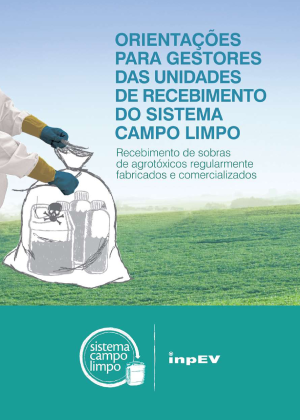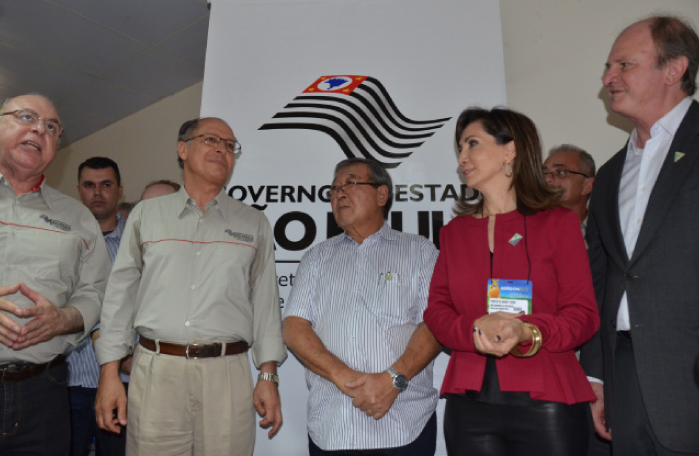Financial management |GRI G4-DMA|
Created by the agrochemical industry in order to fulfill its responsibility to correctly dispose of empty packages containing its products, the institute’s main source of financing comes from contributions made by member companies while the rest comes from accreditation fees from SCL partnering recyclers, from fees charged to cover costs of receiving units and from the lease of the Campo Limpo Reciclagem e Transformação de Plásticos S.A.
In 2015, of the R$ 81.7 million inpEV budget, R$ 60.7 million came from members, R$ 13 million from accreditation fees, R$ 6.3 million from leases and R$ 3.1 million from Campo Limpo dividends. However, the percentage of company contributions has dropped year after year, thanks to the revenue generated by the System itself.
Around 35% of the System’s costs already self-funded. Mid-term projects are expected to increase this percentage to around 40% to 45% by 2019. This is because inpEV’s financial management focuses on reducing costs of the System and its main objectives are to achieve self-sufficiency, which is pursued by capturing value from the chain managed by the institute and by expanding its operational area.
With regard to expanding its range of services, one of the challenges is to transform the entire asset of the team’s expertise and already built infrastructure into tangible value by providing consulting services.
As to cost reductions, the renegotiation of incineration contracts resulted in a 15% reduction in the value of incineration, which corresponds to R$ 954,000 a year. For 2016, the new final disposal of IBCs (Intermediate Bulk Containers), which will separate the plastic container of this type of packaging from its cage (which will be reused), has estimated annual savings of R$ 420,000.
Taxation
Challenged to achieve the proper taxation regime for its reverse logistics program including by means of legislation changes, inpEV conducted internal restructuring in 2015 in order to optimize the fiscal area, which now centralizes the receiving process for payable documents.
Regarding the Tax on the Circulation of Goods and Services (ICMS), levied on the shipment of post-consumption packaging, the argument that these packages have already been taxed at their origin and there is no circulation of the goods at the time of their return was rejected by the National Finance Policy Council (Confaz), an agency of the Ministry of Finance. Therefore, inpEV will continue to push in 2016 for Agreement 51/99, which rules on the ICMS exemption benefit for the circulation of post-consumption packaging, to no longer be simply authorizing but rather imposing, applicable to the entire national territory.
In its current format, each state can decide to adopt or not this agreement. inpEV, which already has regulations for tax exemption in the states that represent a large part of its volume (Bahia, Mato Grosso and Mato Grosso do Sul), has obtained exemption of the state o Piauí in 2015 and continues talks with Rio Grande do Sul. Besides the work at a national level to present a new rationale to Confaz, the fiscal team will attempt to make agreements with more states in 2016.
Regulatory affairs
inpEV participates in discussions of the sector and accompanies the initiatives of the National Solid Waste Policy (PNRS). In 2015, 39 bills were monitored, two of which were archived since they could bring negative implications to the System (one defined rules differing from the current ones for the Federal District (DF) and the other prohibited waste incineration outside the state of origin). |GRI G4-26|
Itinerant collection becomes consolidated
A best practices booklet launched in 2013 standardized the Itinerant Collections (RIs) model. 4,800 itinerant collections took place in 2015, a volume similar to that of 2014. The locations are communicated in advance so that farmers may prepare themselves. In order to communicate this initiative, the institute launched, with the support of CropLife Latin America, the film “Itinerant Collection - a continually more active Campo Limpo System”.
To define new collection strategies is one of inpEV’s goals, which created two work groups to plan models that complement the central stations, outposts and RIs . The challenge is to reduce costs and increase the percentage of received packages - currently around 94% of all primary packages sold are returned to the System.
The lid factory is a new source of resources
A big step in reaching the self-financing status was the inauguration of Campo Limpo Tampas e Resinas Plásticas Ltda., a lid factory in Taubaté in the countryside of São Paulo state. This unit produces Ecocap, a high performance sealing system that is a technological innovation. The cornerstone ceremony of this new project took place in August, 2015 even though the commercial process started its operations already in January.
ECONOMIC AND FINANCIAL
PERFORMANCE |
2013 |
2014 |
2015 |
Total assets |
97.6 |
95.4 |
101.6 |
Total resources that finance the program (inpEV + chain links) accumulated since 2002 |
700 |
801 |
910 |
Net revenue of the activities |
98.8 |
107.3 |
115.6 |
Member contributions |
56 |
55 |
61 |
Accreditation fee1 |
10 |
12 |
13 |
Campo Limpo Property Lease2 |
6 |
6 |
6 |
Net equity |
77 |
76 |
77 |
Net indebtedness3 |
N/D |
0.3 |
1.2 |
1 Paid by the recyclers for shipping packages and for the cooperation with inpEV.
2 Rent paid by Campo Limpo Plastic Transformation and Recycling S.A. to inpEV.
3 As of 2015 only obligations with suppliers are considered, excluding obligations with central stations and outposts. The 2014 number was recalculated in order to ensure comparability. The 2013 value is not available in this new format.
ADDED VALUE STATEMENT |
2013 |
2014 |
2015 |
1. Revenue1 |
99,102.00 |
106,747.00 |
115,069.00 |
2. Inputs acquired from third parties |
70,857.00 |
89,601.26 |
94,266.87 |
3. Gross added value (1-2) |
28,245.00 |
17,145.74 |
20,802.13 |
4. Withholdings |
5,078.00 |
6,497.83 |
6,737.15 |
5. Net added value produced (3-4) |
23,167.00 |
10,647.91 |
14,064.98 |
6. Transfered added value received |
1,579.00 |
1,894.00 |
3,213.62 |
7. Total added value to be distributed (5 + 6) |
24,746.00 |
12,541.91 |
17,278.60 |
Collaborators (wages, benefits and encumbrances) |
10,341.00 |
10,258.06 |
11,619.43 |
Government (taxes, encumbrances and contributions) |
2,733.00 |
3,567.63 |
3,674.81 |
Withheld profit/loss during the period |
5,337.00 |
-1,676.44 |
1,577.12 |
Remuneration of third-party capital (interest and leases)) |
453 |
392.67 |
407.23 |
Accumulated added value |
1,579.00 |
3,352.88 |
-3,154.25 |
1 Includes the reversal of provisions, rental Cofins and non-operational expenditures.
inpEV starts to receive leftovers and improper produts
The receiving of leftovers and improper crop protection products expanded the scope of the Campo Limpo System receiving units, and some of them are already equipped to receive improper products and/or leftovers of post-consumption products, besides empty packaging.
Until 2014, Conama Resolution 334/03, which established criteria for licensing the System units, prohibited the receipt of leftovers and product waste. This resolution was superseded in 2014 by Conama Resolution 465/14, which allows units to be licensed for this type of service, according to new criteria and infrastructure adjustments.
By the end of 2015, 24 SCL units were prepared and licensed to receive inappropriate product leftovers. In 2016, the project is expected to be expanded to another 45 central stations - reaching 100% of them until the end of 2017. It is expected that the entire Campo Limpo System (central stations and outposts) will be prepared for this by 2020.
Packaging containing leftover material is sent to incineration.
Leftovers and inappropriate products
24 units
ready to receive in 2015
100%
of the System by 2020
What are inappropriate products?
Products manufactured and marketed on a regular basis in Brazil, registered at the applicable federal agencies, but which have expired or their packaging has been damaged, making their use impossible.

Elimination of obsolete products
In 2015, inpEV made an agreement with the Government of the State of São Paulo to eliminate obsolete products remaining in the field. |GRI G4-26|
Signed in April by means of the Environmental Agency of the State of São Paulo (Cetesb), this document sets forth that the institute, in conjunction with the Agricultural Protection Office (CDA - Coordenadoria de Defesa Agropecuária), implement the logistics to collect at the listed locations, including conditioning and shipping operations for obsolete products to incinerators, where the collected materials will be destroyed. This project intends to incinerate 420 tons of declared products, removed from more than 320 rural properties in the state of São Paulo.
What are obsolete products?
Banned products, which fabrication and sales have been prohibited by law, mainly organochlorides.

